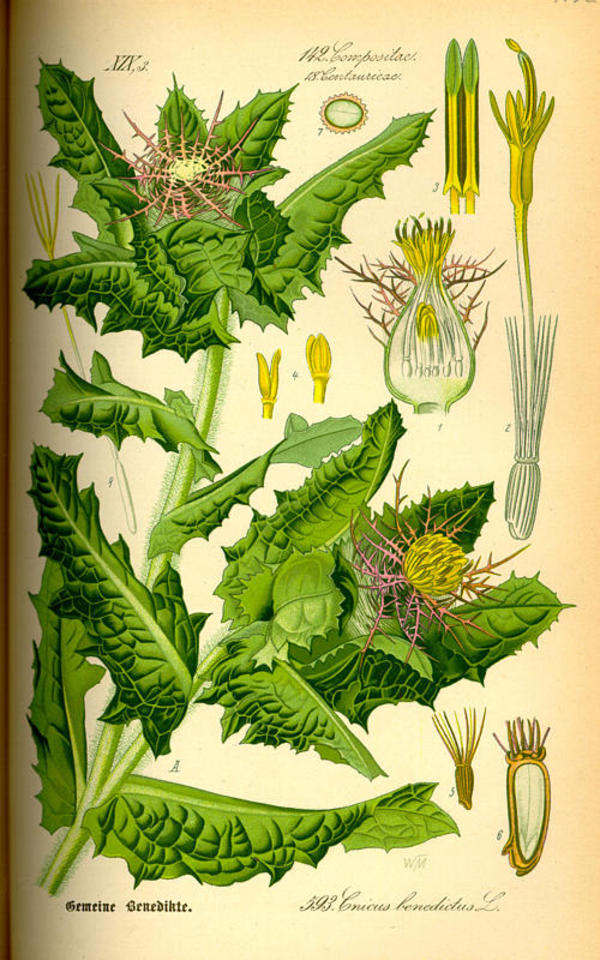
Common Name: Blessed Thistle | Scientific Name: Centaurea Benedicta

Family Name: Asteraceae
Resources
Notes from the Eclectic Physicians
Notes from the Eclectic Physicians
1854: JOHN KING – CENTAUREA BENEDICTA – BLESSED THISTLE
Properties and Uses – A cold infusion is tonic; a warm infusion diaphoretic, and if strong, emetic. Used as a tonic in loss of apetite, dyspepsia and intermittent diseases. Dose of the powder, from ten to sixty grains; of the infusion two fluidounces.
1883: Scudder
The leaves of centaurea benedicta. Dose: The powder may be administered in doses of from Gj to 3 J. Decoction, as an emetic, 3iv. to 3viii. Warm infusion, as a diaphoretic, 3ij. to 3iv.; of the tincture gtt. j. to gtt. x.
Therapeutic Action: A strong decoction, taken freely, acts as an emetic, and may be used for this purpose. It may likewise be employed to assist the action of other emetics. A warm infusion, taken in less quantity, promotes perspiration, and may be resorted to, to fulfil this indication in colds, and in the forming stages of febrile and inflammatory diseases. It will be found valuable in cases of sudden suppression of the menses, arising from exposure to cold. As a tonic and stomachic, we have found a cold infusion exceedingly valuable in cases of a languid and debilitated state of the stomach.
Disclaimer: The author makes no guarantees as to the the curative effect of any herb or tonic on this website, and no visitor should attempt to use any of the information herein provided as treatment for any illness, weakness, or disease without first consulting a physician or health care provider. Pregnant women should always consult first with a health care professional before taking any treatment.
